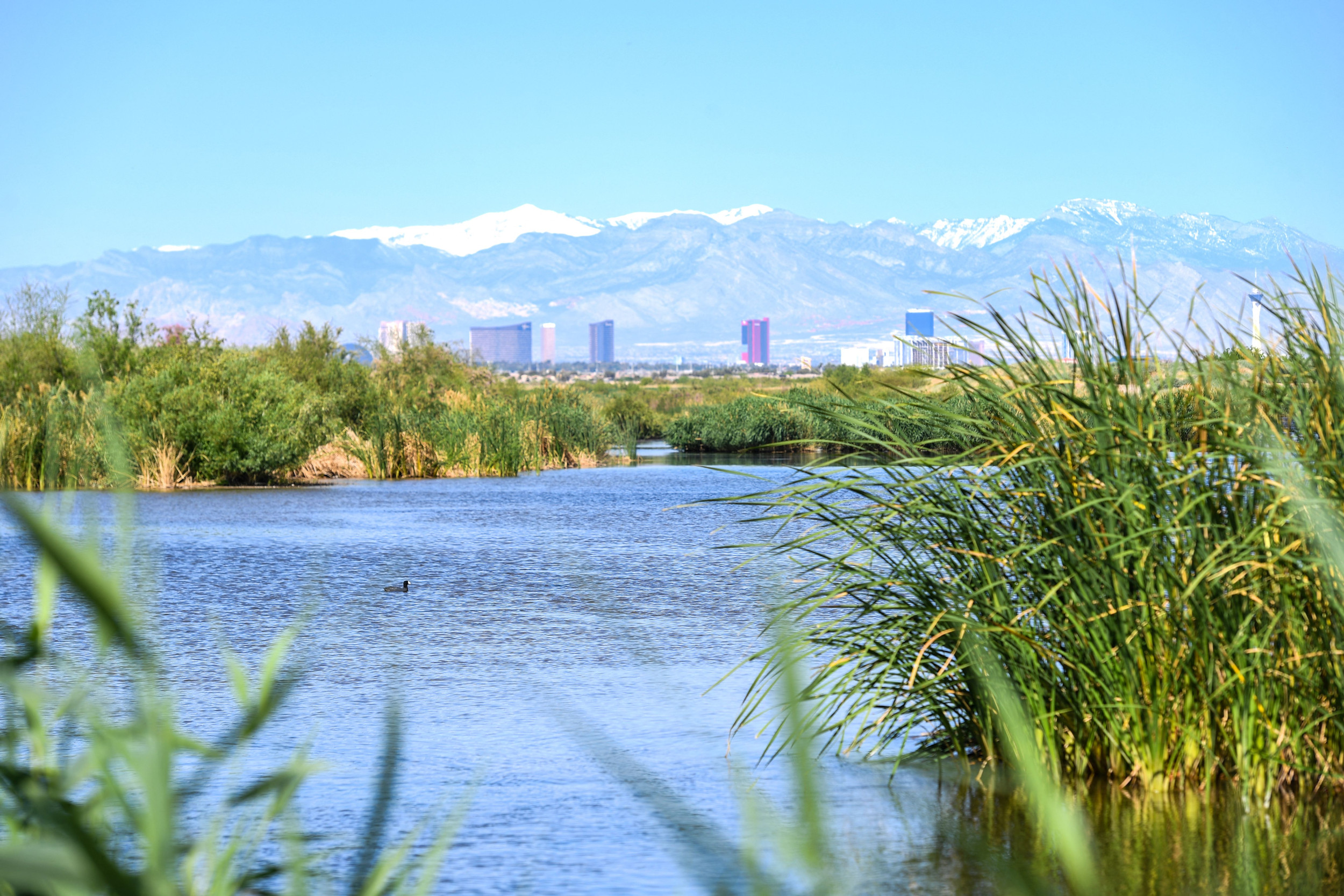Great news for Lake Mead! A recent announcement revealed that a $20 million funding boost is on its way to enhance erosion control efforts.
The Las Vegas Wash is a crucial channel that returns excess water from the Las Vegas Valley to Lake Mead, supplying roughly two percent of the lake’s essential water supply.
Home to the renowned Hoover Dam, Lake Mead serves the water needs of around 25 million residents across Arizona, California, Nevada, and Mexico. Unfortunately, the water levels in the lake have been declining significantly in recent years.
In the announcement, Congresswoman Susie Lee emphasized the importance of the Las Vegas Wash for maintaining Lake Mead’s water supply, stating, “This is a critical resource for both current and future generations.”

VALERIE MACON/Getty
Lee further remarked, “As a Nevadan, I understand how vital our water is. This announcement is a significant victory for our local and regional water resources.”
The federal funding will go toward building an erosion control weir in the Lower Las Vegas Wash within the Lake Mead National Recreation Area. This new structure will help filter incoming water, while also enhancing the habitat for endangered wildlife, ensuring the Wash remains protected for years ahead.
Funded through the U.S. Bureau of Reclamation’s WaterSMART Aquatic Ecosystem Restoration Program, the Southern Nevada Water Authority will oversee the construction of the weir.
Representative Dina Titus, who also advocated for this funding, pointed out, “The Las Vegas Wash channels over 200 million gallons of water daily to Lake Mead. Proper infrastructure is vital to reduce erosion and maintain water quality.”
Titus added that funding from the Bipartisan Infrastructure Law will empower the Southern Nevada Water Authority to continue their water conservation leadership.
In addition to the weir construction, part of the funding will also focus on removing invasive tamarisk weeds—known for lowering the water table—and replanting with native shrubs, trees, and grasses. This initiative aims to create wetlands that will support endangered species such as the southwestern willow flycatcher and the threatened yellow-billed cuckoo.
